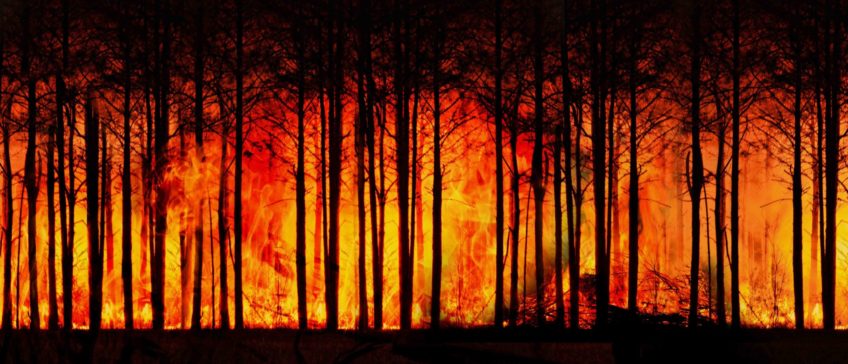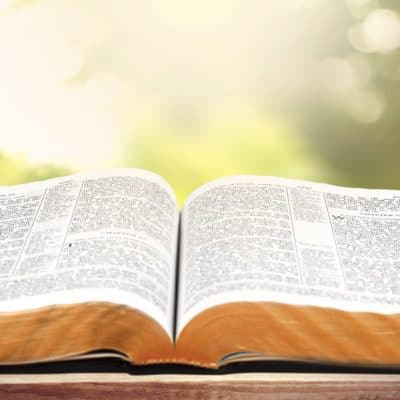34 Lives Lost
2,800 Homes Destroyed
1.25 Billion Animals Killed
Australia has made world headlines over the past few months for reasons and circumstances Australians would rather had not occurred. Australia has been burning. Not for the first time, and certainly not the last.
Most of Australia for several years has been in the grip of, by any reckoning, one of the worst droughts recorded. Again, drought is not new to Australia and not unknown. Over the 230 odd years of the colonization of Australia, long droughts have been common enough. The most well known include the Federation Drought (1895-1903), the World War II Drought (1939-45) and the Millennium Drought (1997 -2009). But droughts of various range and intensity have plagued Australia in every decade since records were kept.
After 2009 there were a few years of respite, but the current drought impacting mainly Eastern Australia has been around for a number of years. Rainfall, even recent rainfall, has in some areas ameliorated the drought for a while. Other areas have gone years without rainfall. Country towns have literally run out of water and require drinking water to be trucked in. Crops have failed massively over wide areas. Livestock have died for lack of feed and water.
The effect of drought, apart from crop failures and starving stock, is the impact on grasslands, forests and wildlife—native flora and fauna—and the greatest impact is displayed by fire and its ravaging of the landscape.
Like drought however, large scale bushfires are nothing new to Australia. Whether you measure the impact of bushfires by death toll (human and animal), houses and other structures destroyed or land area burned out, Australia’s history of fire is significant and there is nothing “unprecedented” about the current summer of 2019/20 fires. Except perhaps the reporting of them in a world obsessed and deluded by “climate change” ideology.
In a display of “never let a crisis go to waste,” it seems every rent-seeking, climate change carpet bagger and their acolytes took the opportunity to push the fires as resulting from man made CO2 emissions. Thousands protested to end coal mining, electricity generation and export all while texting and talking on their mobile phones, traveling in coal fired electric powered air conditioned trains, jet fueled planes and gasoline gulping automobiles. Oh, and a few rode a bike (made from coal powered steel plants and aluminium smelters running on coal fired power). But long before CO2 “climate change” was a thing, Australia’s recorded history shows up the sham.
Take for example these fires:
1851—The Black Thursday bushfires swept the State of Victoria on 6 February, 1851. Twelve dead, one million sheep, thousands of cattle and countless wildlife, dead. 5,000,000 hectares (a hectare being 2.471 acres)destroyed—mostly in one day. That is about one quarter of present-day Victoria.
1926—The Black Sunday bushfires. Victoria, 60 dead, 700 injured, 1000 buildings destroyed, 390,000 hectares burnt.
1939—The Black Friday bushfires in Victoria were part of a devastating 1938/39 fire season across Australia with ash falling in New Zealand (sound familiar?). This fire killed 71, burnt 2,000,000 hectares, destroyed 1,300 homes, 69 sawmills and almost 4,000 other buildings. A Royal Commission noted that “it appeared the whole State was alight on Friday, 13 January, 1939.” The same fire season saw NSW, the ACT and South Australia with huge fires.
1974/75—Australia-wide bushfires burnt about 15% of the land area.
1983—Ash Wednesday bushfires, South Australia, within 12 hours 180 fires fanned by winds of up to 110klms killed 73 in Victoria and South Australia. 3,700 buildings destroyed or damaged, 340,000 dead sheep, 18,000 cattle, countless native animals. That emergency saw 130,000 volunteers called out.
2006/07—Victoria,NSW Tasmania, West Australia, South Australia bushfires too numerous to elaborate.
2009—Black Saturday bushfire. Victoria, 7 February 2009, 173 dead, up to 400 individual fires across Victoria that day. 450,000 hectares burnt, 3,500 buildings destroyed including 2,029 houses.
2019/20—(So-called) Black Summer bushfires. The most recent fire season that has caught the world’s attention actually began in the winter of 2019, June. That fact probably highlights the depth of the current drought. Estimates for area burnt over this season put the figure at (at early February 2020 and it’s not over yet) around 20,000,000 hectares, buildings destroyed, about 6,000, including about 2,800 homes. At least 34 people have been killed. Of those killed have been a number of volunteer fire fighters. One was crushed when his 12 ton fire appliance was completely flipped on its roof by a firestorm wind. Another two were killed when the cab of their fire appliance was crushed by a falling tree. Three American aircrew were killed when their C130 fire bombing aircraft crashed in the Snowy Mountains region after discharging a load of fire retardant on an emergency level fire. Many others were civilians who were defending their properties and were overwhelmed.
Estimates of wildlife animals killed run to a billion and more. Plus, large numbers of stock. All of that added to the losses from years of drought.
Interestingly Bjorn Lomborg, the Swedish climate change believing skeptic, has written that this fire season has seen so far only about 2.5% of Australia burn whereas the annaul average over the past decade has been about 4%. That may depend upon when he took his figures—perhaps not as far back as June 2019.
The preconditions for devastating bushfires are several. Extended drought and a dried-out landscape is a common thread. Added to that, conditions of extremely high temperatures, low relative humidity and strong winds create the ideal conditions for conflagration. This current summer, as with past events, has featured all those factors in abundance.
In every one of those quoted examples above, the preconditions for devastating bushfire were the same. So what, if anything, sets apart these current fire conditions from earlier fire seasons?
Apart from the right macro (drought) and micro (local) weather conditions for catastrophic fires there is one other overriding element—fuel. And it is fuel load that sets this fire season apart, in combination with the weather.
Australia’s bushland overwhelmingly consists of native eucalyptus trees, of which there are scores of species. These trees as a general rule produce an enormous amount of leaf litter, dead twigs and branches, large and small that fall to to the forest floor. Added to the forest floor ground cover are introduced weedy species such as lantana and black berry, along with other scrub. All excellent kindling.
Australia’s East and South East Coast’s eucalypt forests are where most of the big fires occur. Those forests comprise tens of millions of hectares, often in hilly, mountainous terrain that is difficult to access. Historically, large areas of northern and southern NSW coastal forests were logged. The same for most of Australia’s east coast, including Victoria and every other State. To facilitate logging, tracks and roads were cut giving access to remote areas. In other places fire trail roads were put in to give easier access to fire fighters.
Then, around the 1970s came the Green movement, the anti-logging movement. The movement to protect “old growth” (don’t worry that most of these areas of “old growth” had in fact been logged several times) forests from the loggers and the campaign to lock up vast tracks of forest from human intervention was up and running. In NSW and other States legislation was passed by left leaning governments to curtail logging and proclaim designated “State Forests” and “National Parks.” Limited logging would continue in State Forests, but areas designated National Parks were locked up. Access denied, fire trails were allowed to disappear under scrub and be reclaimed by the bush. Access to roads through National Parks were even blocked by bollards and locked gates —and who knew who had the key in times of emergency? In NSW alone, there are now over 800 National Parks.
This history is critical. No one expects that mitigation against fire could involve the entirety of Australia’s forests. But over decades the practice of hazard reduction burning during winter months by volunteer Rural Fire Services has played an effective role in reducing to manageable levels the impact of many summer fires, at least around populated areas. Now since the 70s local and State Government regulation concerning land clearing, tree removal and hazard reduction work in general has been loaded with beurocratic layers. Landholders who fear fires are virtually forbidden from reducing hazards on their own land.
National Parks have effectively been “hazard reduction free” zones. But dozens of small coast towns and villages are surrounded by these National Parks. Even forest areas not controlled by the National Parks and Wildlife Service (in NSW for example) have not seen any hazard reducing winter burns for 35 plus years. As a result, even areas containing heavy residential concentrations can be sitting next to forest with 20 tons plus per hectare of fuel on the ground. That is kindling folks, lots of kindling—the stuff that will easily ignite by lightning or arsonist and lead to a big fire.
Burnt off in cool weather, this fuel can be eliminated usually with safety and maybe with annoying smoke over a few days. Left to pile up year after year it is the starter fuel of conflagration by fire. And the key to opening up an even bigger fuel load in the trees themselves—supercharged in the right conditions by the eucalypt oil in the leaves of the canopy that, once having reached an ignition temperature, convert each eucalypt tree into a gas/oil incinerator with fires generating heat over 2000 degrees celsius. That is the perfect firestorm—total, unstoppable destruction.
And it all comes down to fuel load on the forest floor. Oh, and lightning strikes or arsonsists to start the fire. Maybe the odd cigarette negligently discarded out a car window. Maybe a hot exhaust on a tractor running over dried up stubble in a field. One fire was caused by the hot landing lights of an army helicopter igniting stubble in a field.
And the fuel load on the forest floor has to be big enough to project flames up the trunks of oftentimes hundred foot drought affected trees to reach a canopy that is enveloped in eucalypt oil vapor given off by the leaves. A virtual gas bomb is ignited, which then envelops the next tree and the next, till all are consumed and everything around them—people, buildings, animals. Pushed along by strong, dry winds.
No, “climate change” did not cause the 1851 fire or the 2019/20 firestorm season. Fuel on the floor did. Drought did. A combination of high temperatures, high winds and low relative humidity did. And that is the thread that runs through every catastrophic Australian fire season. And indeed, the less memorable ones, because every summer Australia burns to one degree or another. Areas that have now been recently consumed won’t need hazard reduction burns for a while. But because the bush regenerates—and the animals will come back—these areas will need attention in the next five years. Along with all the areas that did not or have not yet burned. And hopefully will not burn this time around.
The question is, will the authorities now, finally, implement the decades old recommendations of past Inquiries, Royal Commissions and general advice? Which was: increase drastically the annual winter hazard reduction burns—especially around occupied lands, towns, villages, the fringes of National Parks and State Forests. Or will the Federal and State Governments get bogged down in yet another Royal Commission that may report back after two more fire seasons have passed and nothing done?
The last major Royal Commission held from Victoria recommended an annual 5% hazard reduction burn. Never happened. In the past decade no State or Territory has done any more than 1% hazard reduction burn. And, since the 1930’s there have been no less than 30 such official inquiries, Royal Commissions and hundreds of recommendations—almost none followed.
The climate needs to change. That is the climate for hazard reduction burns. Fuel loads need to be safely reduced in winter. The financial cost, apart from the human cost and cost to the natural environment, has been huge. It will probably amount to well over $5 to $10 Billion by the time things are started to be put right. Perhaps far more. Governments need to look at the cost of hazard reduction as an insurance premium. And be prepared to spend far more on fire mitigation work in order to save not just money but lives—human and animal. And the environment they have so feverishly locked up in National Parks for a very, very few to ever enjoy.
In a bid to preserve “nature,” the “Greens,”—the environmentalists, the self-appointed arbiters of what the natural state should look like—have created, and certainly not ameliorated, the circumstances that can see everything they claim to protect, actually be totally destroyed. The koalas, the bush wallabies, the possums and the myriad other marsupials and reptiles and birds numbered among that estimated billion dead native animals would surely have hoped for better forest management than this.
Perhaps what has caught the world’s attention the most about this season’s fires is the destruction of the iconic koala bear population. In NSW it is thought several thousand koalas have been killed as a result of fires. On Kangaroo Island, of South Australia, where there was once a population of over 50,000 koalas, more than half are thought to have been killed in the fire that destroyed over a third of the Island. Again, not managing fuel loads in these “protected” environments actually led to the almost total destruction of what was supposed to be “protected”—the koalas. Leave aside, but not forgetting, all the other endangered species.
God placed Adam and Eve in the garden of Eden to “dress it and keep it.” That is, manage it. Is it too much to ask that the government agencies tasked with curating the myriad National Parks created in NSW, Victoria and elsewhere in recent decades actually also “dress” them, in order that we might “keep” them?
So called man-made climate change from CO2 emissions did not cause this destructive fire season. Man’s inaction, and in some cases malicious action, was largely responsible. The only change concerning “climate” is a change in attitude.










